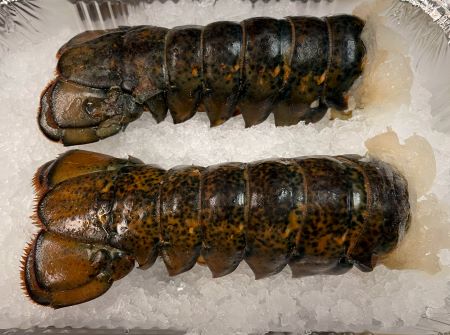

What does “Cold Water” Lobster Tail mean?
When sizing up lobster tails at a seafood market’s frozen section, you may notice a stark difference between shells. A few have a leopard or spotted appearance with a “tannish” color, the warm-water; while others have a bold reddish-brown solid façade, the cold-water. Having a keen eye for these differences is just a start. Cold-water tails from lobsters caught off the coastlines of Canada or New England naturally exhibit a more desirable edge over its warm-water cousins. They grow more slowly in cold water. This occurrence develops a tender meat that’s plump and firm that seldomly cooks to mushiness. Instead, grilling or broiling cold-water tails produces a delicate, buttery white meat with a firm texture, only offered from this northern clawed specie. By the way, warm-water lobsters, known as spiney lobsters bear two long antennae rather than the “Maine” lobster’s paired claws. The bottom line, robust like crab and sweet like shrimp, cold-water tails boast a flavor somewhere between the two.
The migration from the East Coast to the Mid-West during the early Twentieth Century led more and more diners to try lobster alongside crab and shrimp. The health benefits abound! In 100 grams or about 3.5 ounces of lobster, the diner gains 90 calories, 1 gram of fat, 296 mg of sodium, and 19 grams of protein. None of the fat derives from trans or saturated fat, so lobster represents a wise food choice. It even contains large amounts of Vitamin A, a beneficial antioxidant and Vitamin B that drives metabolism. With all these attributes, a cold-water lobster tail means “a tender, succulent meat with body giving energy ideal for a healthy seafood choice.”
Our customers also purchased...
|
|
|


